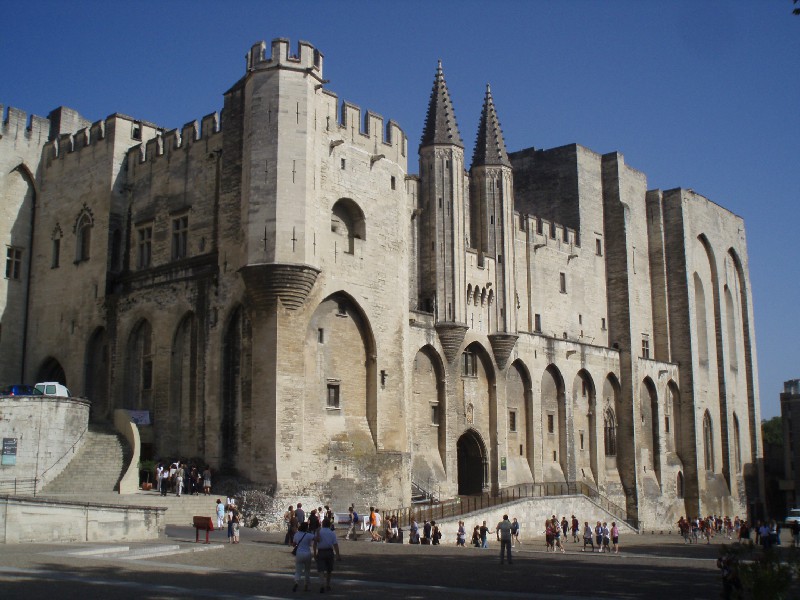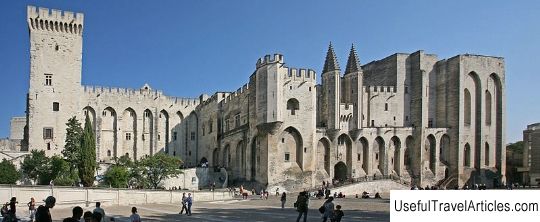Information about Avignon France
Rating: 7,9/10 (684 votes)  TourismAvignon does not have millions of tourist visits every year, but people interested in European history come here regularly. Once the official seat of the Pope, the city is now home to beautifully preserved examples of Gothic architecture. In addition to the Papal Palace, the city has a dozen interesting places to visit, both in Avignon itself and in its vicinity. AttractionsThe main and largest attraction of Avignon is The Papal Palace. The construction of this miracle of Gothic architecture, as well as the actual creation of a papal residence in Avignon, was associated with many political events of the XIV century. The result of the creation of the residence was the construction of the palace for many years, the total area of which is 12 thousand square meters. Since 1377, when Rome became the official residence of the Popes, the palace in Avignon began to regularly change its functions, starting from the Great Revolution of the 18th century, the palace premises were plundered, buildings were destroyed, during the reign of Napoleon Bonaparte there were generally placed the barracks of the French army. The palace was completely restored only in 1906, at the same time the French authorities turned it into a state museum. Now the Papal Palace is included in the UNESCO World Heritage Site, excursions here are regular, tourists can visit almost all premises.  Opposite the Papal Palace is a seemingly inconspicuous but a very important building for Avignon is the Small Palace. It was built in 1317 as the residence of the French bishops. This is where the history of the palace ends before the era of the Great Revolution. Until the 19th century, the palace housed a school for boys at the Diocese of Avignon, by 1850 the school was closed, and it was decided to give the empty premises of the former palace to a vocational school. Until 1958, once the second most important building in Avignon was an educational institution, the local authorities decided to restore historical justice and return the original appearance to the Small Palace. The interiors were turned into the halls of the Medieval Museum, which is still operating today. In total, the museum has 19 exhibition halls that contain, not only things, associated with everyday life or military affairs of the declared era, but also unique works of art of that time - frescoes, sculptures, paintings. Notre-Dame-de-Dome - a massive cathedral included in the composition of the architectural ensemble of the Papal Palace, but, nevertheless, located slightly away from it. In fact, despite the paucity of historical information, it is known that the construction of the cathedral began two centuries before the transfer of the Pope's residence from Rome to Avignon. In addition to the chronicles of the 12th century, no sources about the cathedral have survived, it is only known that it was completed over 5 centuries. The cathedral is a white building with several chapels attached. The austere exterior is deceiving the only luxurious element on the outside is the decoration of the dome - a gilded statue of the Virgin Mary, according to experts, this statue weighs more than 4 tons. Inside, the cathedral offers believers a splendid view - the light from the old stained-glass windows is in perfect harmony with modern lighting, and the altar and organ of the cathedral will delight anyone who sees them. The absolute contrast with the austere Gothic buildings of the historic center of Avignon creates Mint. This building, erected in 1619, is an exceptional example of the Baroque - artsy stucco molding, bas-reliefs and sculptures that adorn the facade sharply distinguish this building. Until 2007, a conservatory was located here, where musicians were trained in a variety of classes, Two hundred years of existence of the educational institution have presented France with hundreds of talented performers and composers. Now the mint building is open for group and individual excursions at any time of the year. The main art museum of Avignon is the Calvet Museum - once the residence of French cardinals. The building was built in 1719, which makes it one of the most recent buildings in the historic city center. The museum was named after the famous native of Avignon, a doctor, as well as a famous collector of antiques and paintings. His collection has reached a total of 12 thousand units of coins, sculptures and paintings. The Calvet Museum contains only a collection of paintings presented by the most prominent masters of France. 
We also recommend reading Geography and Climate in Avignon Topic: Information about Avignon France. |




